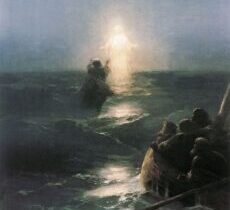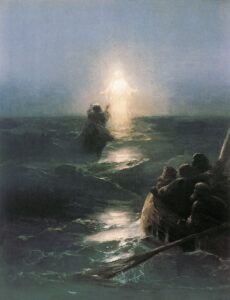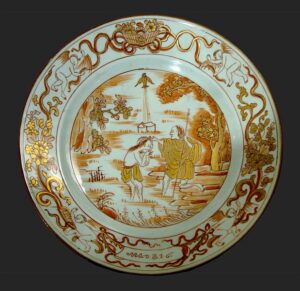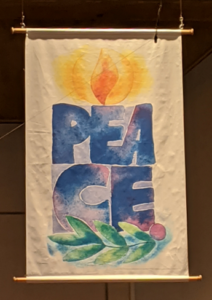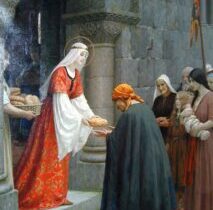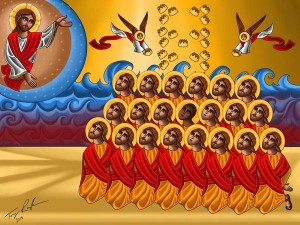What’s in a Name?
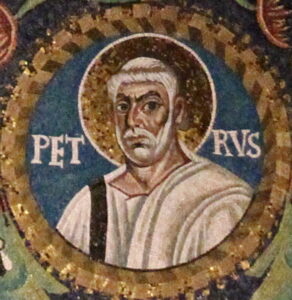 In our contemporary Western culture, names are given to us at birth and we typically keep them in one form or another for the rest of our lives. One of the first questions we ask when a child is born is, “What is the baby’s name?” Then we wonder how the parents happened to select that particular name. Was it a name belonging to someone else in the family? Was it the name of a friend or respected author, teacher, sports figure? Where did the name come from and what would it tell us about the child?
In our contemporary Western culture, names are given to us at birth and we typically keep them in one form or another for the rest of our lives. One of the first questions we ask when a child is born is, “What is the baby’s name?” Then we wonder how the parents happened to select that particular name. Was it a name belonging to someone else in the family? Was it the name of a friend or respected author, teacher, sports figure? Where did the name come from and what would it tell us about the child?
As we grow up, people ask us our names and we give the name by which we want to be known or by which we are legally known, depending on the circumstance in which the question is asked.
Sometimes people change their names as they grow older. It may be that the name simply doesn’t work well in their profession. A lovely woman I knew was a teacher whose last name was the same as that of a type of fish. She changed the name by which she was called to Sister Grace (her middle name) rather than Sister Iona in the early 1970s when religious women returned to their birth names rather using than their religious names. Her given name would have been too distracting to the children she taught. Others change their names to match their gender identities. Some change their names because they simply never liked the original one. Some change because their cultures expect married women to take their husband’s last name.
This is not the pattern in all cultures. In many cultures, names are not assigned until a child reaches a certain age. Names can be changed as circumstances change. In some cultures, a person’s name is what the other person wants to call them. “What would you like to call me?” is an acceptable response to a question about one’s name. The new name describes a new relationship, a new reality. Our own practice of having special names/titles for parents or other relatives is similar in this regard.
Jesus had a human name, given to him at birth. His family and friends knew him by this name. He was the son of Joseph, a native of Nazareth. His followers also had names given them by their families.
Yet as Jesus moved through the time of his public life, questions arose about who he was. In Nazareth they asked, “How can he be anybody special? We know his parents. He grew up here among us.” In other cities, folks began to wonder if he might be one of the prophets, maybe a new one or maybe Elijah, the one who was to return before the Messiah, the Anointed One, would come to restore the kingdom of Israel.
One day, when traveling with his disciples in northern Israel, Jesus asked them what they were hearing among the people. “Who do the people say that the Son of Man is?” Son of Man was a term used in Hebrew scriptures to name the savior who was to come. The savior was to be one like a Son of Man. It wasn’t a name one typically used to describe oneself, so this was in itself important. The disciples mentioned John the Baptist (Jesus’ recently executed cousin), Elijah, Jeremiah, or one of the prophets as identities that people were speculating might apply to Jesus. There was a tradition that Elijah would return before the Messiah came.
Jesus then asked the disciples, “Who do you say that I am?” Talk about putting them on the spot!
Simon, always the impulsive one, responded, “You are the Christ, the Son of the living God.” This was quite a statement. The Christ, the Anointed One, is much more than an ordinary man. We may speak of Jesus as if Christ were his last name, but Christ is much more than that. The Christ is the Messiah, one sent by God to reconcile the human and the divine. It was not a title to be used lightly. People who claimed that title could be executed as heretics.
Jesus praised Simon for his insight. Then he conferred a new name on his friend, one that was not in common use at that time. “Blessed are you, Simon son of Jonah, for flesh and blood have not revealed this to you, but my heavenly Father. And so I say to you, you are Peter and upon this Rock I will build my church…” (Mt 16:13-20)
Peter (Petros) is a masculine form of the Greek word for rock, petra. This type of rock was not a rock like a huge boulder. It was more like a small section of a massive ledge. This new name recognized his strength and leadership position among the disciples, as well perhaps as his tendency to go out on a ledge from time to time! It was not a man’s name in use at that time, but it became common in subsequent years because of the faithful life he lived.
Names have meaning. Peter, the rock, was not a perfect follower of Jesus. He made many mistakes. He sank into the waves as he tried to walk across them to Jesus on the stormy lake. He tried to convince Jesus not to go to Jerusalem. He allowed Jesus to wash his feet, rather than refuse and be excluded from the community. He denied his master in the high priest’s courtyard when Jesus was on trial. He was not there as a witness of the crucifixion. But he was still a leader of this small group of men and women whose witness would lead to the spread of the Good News of the resurrection and of God’s great love for all of us. He saw the empty tomb. He met the Lord after the resurrection in the upper room where they had celebrated the last meal together with Jesus. And this imperfect man, this man who kept returning to ask forgiveness, was selected to be the rock-strong leader. The one whose leadership would help ensure the continuation of the mission, he learned from his mistakes and continued to follow his Lord.
What does your name mean? How does it reflect who you are? What would others call you if they could give you a new name? How would you like to be known?
This is a good time to find out a bit more about the meaning of your name. Do you have a patron saint? How about a confirmation saint? Who were they? Why did you choose them?
We grow in faith as we learn about those who came before us. We also grow as we look at our lives and dreams today. Names matter. Names are powerful. May we always use them to support each other and build a community of love and respect.
Readings for the Twenty-first Sunday of Ordinary Time – Cycle A
Read More




